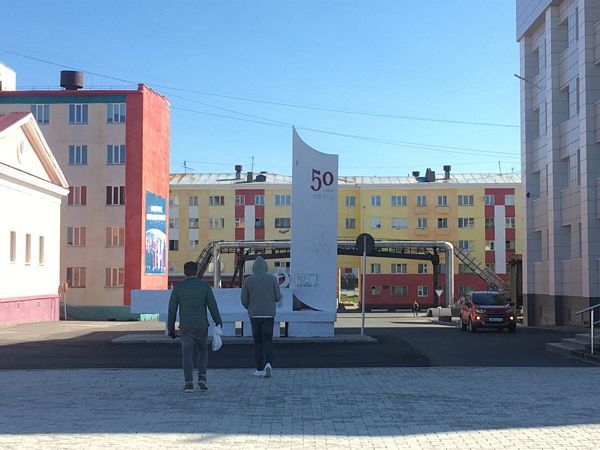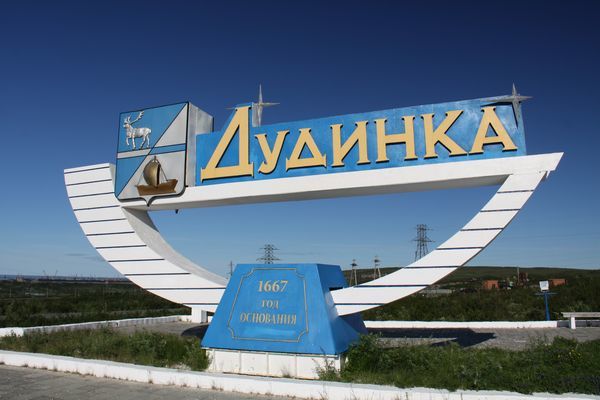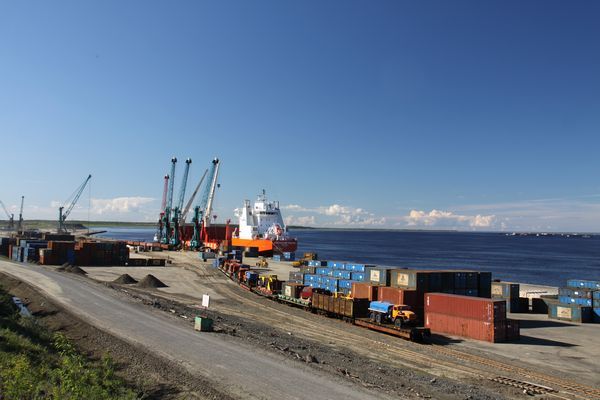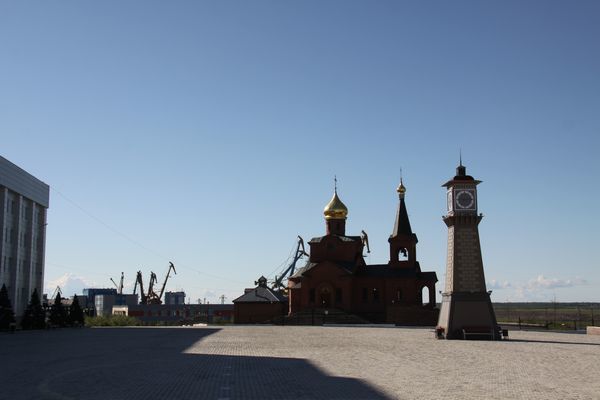Dudinka | Russia Travel Guide
Dudinka
Introduction
History
What is a 'Closed City'?
What's the weather like?
How to get there
What to do in Dudinka
Accommodation
Introduction
Dudinka is one of the most remote settlements in Russia.
In its particular area (the Talnakh peninsular) it is still the major port, is situated near the mouth of the mighty Yenisei River, where it empties into the Arctic Ocean.
Thus, Dudinka has great strategic value as well as a long history as a settlement than most other remote towns and cities.
Dudinka is a fascinating and surprisingly scenic small town with much more to offer the visitor than one would at first expect!
History
Dudinka was founded officially in 1667 as a winter settlement of the Russian Empire, mainly for exploration, trade with local native people, and so on.
The area had been inhabited by humans though for many centuries prior, and still to this day, there are communities of many of the local tribes (Nenets, Evenki, etc) who make the far north their home.
The basic settlement was expended in the 1930s into a proper town, with a railway line laid to Norilsk and port facilities built.
This progress though isn’t as positive as it sounds; any settlements built or expanded in remote Russia in 1937 or 1938 were inevitably to utilise the gulag population bloated by the victims of the Great Terror and Stalinist repression.
The population explosion in the area at this time wasn’t down to great opportunities being available; the people who moved here weren’t given a choice in the main part.
Climate wise Dudinka gets what you may expect of somewhere more than one and half degrees into the arctic; shockingly cold winters mostly, and periods of complete darkness for days on end.
But in summer it is very pleasant indeed, the wind from the river can be fierce for sure though, be prepared for some variety on your visit to Dudinka!
The main industry in Dudinka is port-related; shipping the nickel generated at the various mines and processing facilities in the Norilsk area out to the rest of the world.
As a result, the port here can be busy and bustling.
As the river freezes in winter though there is an annual event whereby the port itself is deliberately flooded when the ice is broken up.
This involves evacuating all equipment every June and breaking the ice, causing flooding up to 20m deep.
After the waters subside the shipping season can begin and the port is basically rebuilt and operates until October when the cold closes in again.

What is a 'Closed City'?
The concept of a Closed City is something that seems anachronistic in this post-cold war day and age.
However, Russia still has dozens of such places.
Usually, cities and areas were initially closed (meaning access for foreigners was not permitted) because they were penal colonies, military sites, areas of key industry production, or of some other form of great sensitivity.
Many formerly closed cities are now wide open (for example Vladivostok, closed until 1991).
Norilsk and the other cities we visit on our tour in this area (Dudinka, Talnakh, Igarka) all remain with their status as Closed Cities intact.
However, we do have a (legal!) way of getting there and we are more than happy to share this access with you!

What's the weather like?
Frankly, the answer to this is that it is extremely inhospitable and absurdly cold for much of the year.
Being in the arctic circle this time of year also includes weeks of complete darkness.
So all-in-all very….Russia, one might say.
However, our tour here is in summer when the days are long (as in, they never actually end during the trip).
The weather is clement (around 10-15 degrees during the day) and even the much famed and feared pollution in and around the main city is not as bad.
There is, of course, a stark beauty about remote and industrial places in winter
If you disagree with this statement you simply have different aesthetic standards than we do!
This is outlined will in the fascinating and sad short documentary about Norilsk; My Deadly Beautiful City which is well worth watching.
Nowhere does extremes better than Russia and the far north is very much a place of extremes so temperature and weather variations are quite drastic and dramatic.
But this is part of the experience in such a place, and something many locals are proud of being able to handle and go through seasonally;
Although in the deepest winter some crazy stories about ‘black storms’ come out of Norilsk!

How to get to Dudinka
FLIGHT
The nearest airport to Dudinka is Alykel Airport, about halfway between here and the larger city of Norilsk.
Flights to and from here are domestic only and include service to Moscow, Novosibirsk, holiday areas in the Caucasus, and several other places.
As many mineworkers in Norilsk are well-remunerated it is common for people from there to travel domestically and internationally for holidays, so flights are often full.
Igarka is the other nearest airport, services to here currently are only from the regional capital of Krasnoyarsk.
TRAIN
There is no railway connection from the Norilsk area to the rest of Russia.
An attempt was made to connect the city to Moscow with the Salekhard-Igarka Railway, a gulag project that despite the grimly predictable suffering and overworking of the prisoners failed to be completed and was abandoned in 1953.
At present trains exist only to ferry materials between the industrial complexes of Norilsk and the port of Dudinka, so no passenger option at all for any trains in this region.
BOAT
As the Yenisei River merges with the Arctic Ocean very close to Dudinka this is the main terrestrial method of moving anything between the Norilsk area and the interior of Russia.
As distances involved are huge and the river is frozen in parts for much of the year this isn’t a fully viable option for human transport.
Our new tour of Norilsk does involve a river trip for a whole day from Igarka to Norilsk to see some amazing views and travel in a quirky but fascinating way into this closed area.
Passengers ships sail from Krasnoyarsk, far to the South but along the same river.
Krasnoyarsk is the provincial capital (of Krasnoyarsk Krai, which also includes Dudinka and Norilsk) and boats take around 3-4 days to make the entire journey.
It is possible to join a boat trip along the way if you don’t want to make the entire trip by ship.
CAR
Zero roads link Dudinka with the rest of Russia.
Residents call anywhere outside of this area “the mainland” for this very reason.
All cars are imported by ship.
If you are in Dudinka and have a car you can get to Norilsk, Talnakh, and other surrounding villages, but not into the mainland of Mother Russia
What to do in Dudinka
Taymyr History Museum
A very extensive and impressive museum indeed, a real unexpected gem considering the modest size of the town.
This place has various exhibits showing life in the arctic, the range of local native tribes, the history of Russian involvement in the area, information on the natural world and industrial efforts here too.
Takes a good couple of hours and can be finished off with ethnographic demonstrations such as how to prepare the local delicacy of frozen candle fish.
Good selection of fridge magnets here too!
Waterfront sights
Everyone (or at least the kind of people who might find themselves in Dudinka!) loves a good monument or two and Dudinka is very good for these;
Lenin stands outside the museum set in stone, a native girl in a canoe in bronze nearby, and the smaller cranes of the Dudinka port line up photogenically just down the road.
A little further into town are some T-55 tanks and a WWII memorial as well.
The sides of some buildings have some interesting and well-done murals celebrating various anniversaries since the foundation of the settlement or the granting of town status.
Wandering around & mixing with locals
Dudinka is very much navigable on foot, and in doing this you will get the best photos too – the buildings are on stilts and gas pipes run above the ground, testament top the permafrost that runs beneath your feet.
The Arktika Sports complex is home to the local ice hockey team.
It's also a good place to see some sports fans and casual skaters having fun, the Okean Supermarket stocks locally made beer
(plus a local supermarket is always something tourists should visit).
The supermarket also has a very good restaurant and bar on the upper floor too, an unexpected pleasure (although cocktails are not cheap!)
Accommodation in Dudinka
There are not many, it is a small town after all and you would only be here for one night unless you were working at the port.
The Hotel Viktoria is a good option and has a decent restaurant, the Yeniseyskie Ogni Hotel is slightly better located and a bit more fun.
All options are basic though but do the job surely enough!
Interested in a tour to Russia?
Travel to Russia with the
Russia travel experts, Koryo Tours
Russia Tours | Sign up to the mailing list | About Koryo Tours


